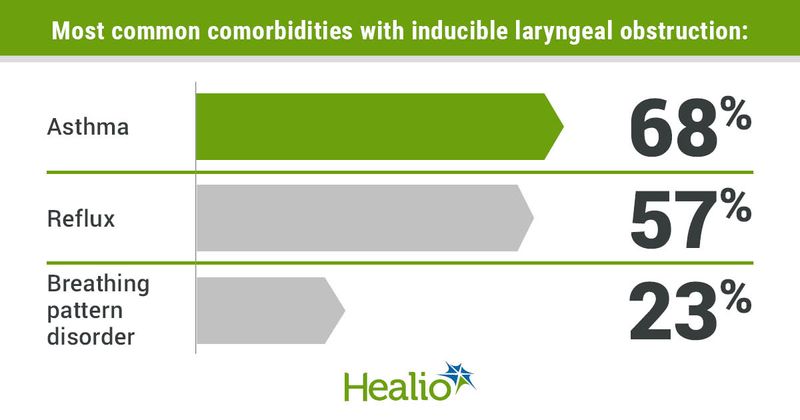Inducible laryngeal obstruction associated with high burden of morbidity, health care use
Click Here to Manage Email Alerts
Key takeaways:
- There is a lack of data describing the demographics and impact of inducible laryngeal obstruction.
- Data from this study will guide clinicians in health care resource management and research priorities.
Researchers identified inducible laryngeal obstruction as associated with a high burden of morbidity and health care utilization, according to study results published in The Journal of Allergy and Clinical Immunology: In Practice.
“The lack of robust prospective characterization of [inducible laryngeal obstruction (ILO)] impedes understanding of the condition and consequently limits advances in research and optimization of management strategies,” Jemma Haines, BSc (Hons), PhD student in Manchester Biomedical Research Center’s respiratory theme, and colleagues wrote. “To address this deficiency, we established a U.K. national registry, with standardized data entry from tertiary ILO treatment centers, with the aim of comprehensively describing the clinical and demographic features of ILO.”

To achieve that aim, Haines and colleagues conducted a multicenter prospective characterization of 137 individuals (80% female; mean age, 47 years; 82% white) with endoscopically diagnosed ILO included within their registry. The four included centers received referrals for patients with difficult-to-treat asthma, unexplained breathlessness or suspected upper airway difficulties.
The registry included data on demographics, comorbidities — such as asthma, reflux, nasal disease and breathing pattern disorder — health care utilization, physiological data, questionnaire scores and imaging information.
Of the 137 participants included in the analysis, 87% had inspiratory ILO and 82% required provocation to induce ILO. The most common comorbidities were asthma (68%), reflux (57%) and breathing pattern disorder (23%).
Health care utilization was high, with 69% having an emergency visit to a health care setting at least once in the previous 12 months, close to half (44%) being admitted to the hospital and 18% being admitted to intensive care.
The researchers also used the validated MRC Dyspnoea Scale (graded 1 to 5, with 5 being most severe) to assess patients’ symptom and functional burden.
The median of functional impairment was grade 3 (interquartile range, 2-4), with 64% overall reporting impaired functional capacity (grade 3).
Only 12% felt untroubled by breathlessness except during strenuous exercise (grade 1), whereas another 12% felt too breathless to leave the house (grade 5).
Based on the Hospital Anxiety and Depression Scale, researchers also observed that 29% of patients indicated anxiety and 26% depression based on scores of 11 or higher.
“Our findings highlight the urgent need for robust research to better understand ILO management toward reducing both the individual and health economic burden of the condition,” Haines and colleagues wrote.
